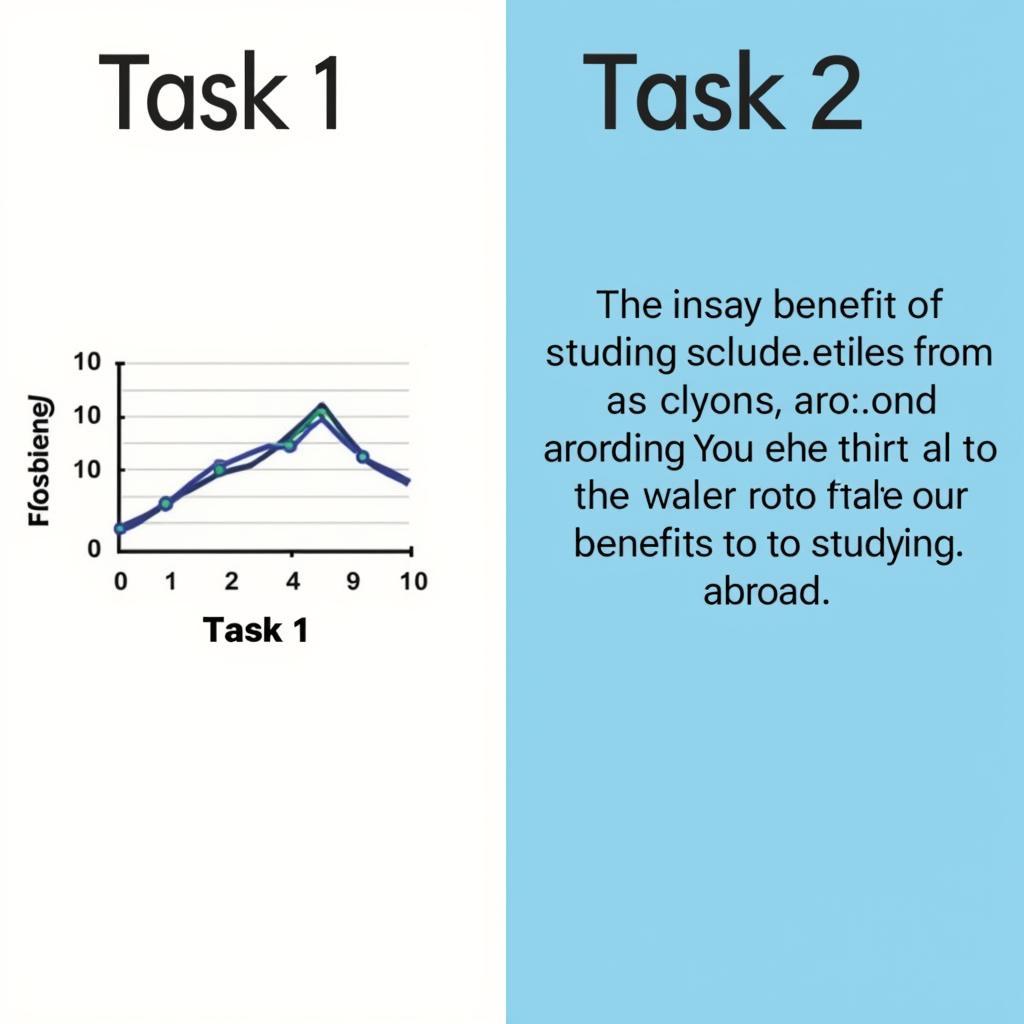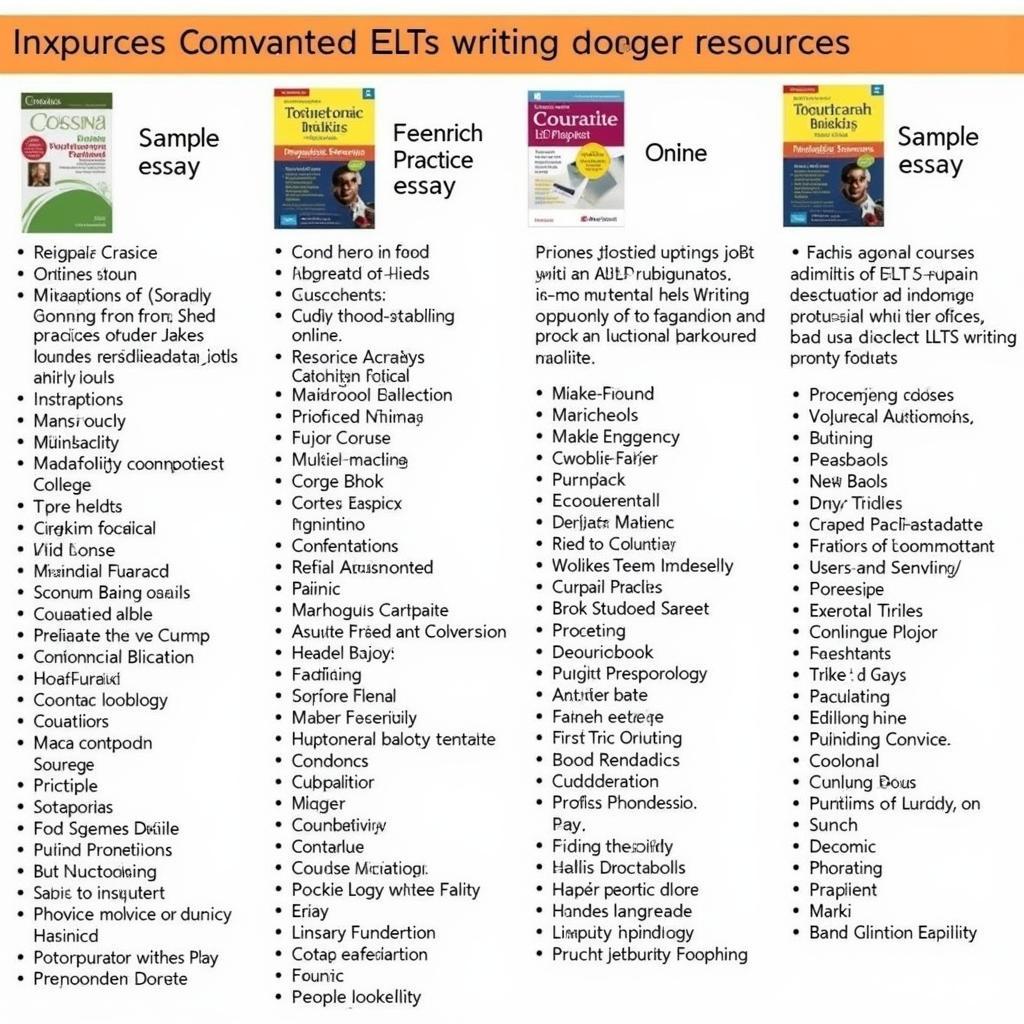Giỏ hàng hiện tại chưa có sản phẩm nào!

IELTS Writing for Success: Academic Module
Achieving a high score on the IELTS Writing test (Academic Module) is crucial for individuals seeking academic or professional opportunities in English-speaking environments. This comprehensive guide will provide you with valuable insights, strategies, and practical tips to excel in your IELTS Writing exam.
Understanding the IELTS Writing Test (Academic Module)
The IELTS Writing test assesses your ability to communicate effectively in written English across a range of academic contexts. It consists of two tasks, each requiring a different writing style and approach:
Task 1: Describing visual information presented in graphs, charts, tables, or diagrams (150 words minimum, 20 minutes recommended).
Task 2: Writing an essay in response to a given prompt, presenting and supporting your opinion or arguments on a specific issue (250 words minimum, 40 minutes recommended).
 IELTS Writing Task Types
IELTS Writing Task Types
Key Strategies for IELTS Writing Success
To maximize your chances of success in the IELTS Writing exam, consider implementing the following strategies:
1. Planning and Structuring Your Writing
- Analyze the task carefully: Before you start writing, ensure you fully understand the requirements of the task, including the type of information to be presented and the target audience.
- Brainstorm ideas: Take a few minutes to generate ideas and relevant vocabulary related to the topic.
- Create an outline: Structure your writing logically, with a clear introduction, body paragraphs, and conclusion.
2. Mastering Grammar and Vocabulary
- Use a variety of sentence structures: Demonstrate your grammatical range by using a mix of simple, compound, and complex sentences.
- Employ appropriate vocabulary: Choose words that are relevant to the topic and demonstrate your academic vocabulary.
- Proofread for errors: Before submitting your writing, carefully check for grammatical errors, spelling mistakes, and punctuation errors.
3. Developing Coherence and Cohesion
- Use linking words and phrases: Connect your ideas smoothly and logically using cohesive devices such as conjunctions, transition words, and pronouns.
- Maintain a clear and consistent style: Use an appropriate tone and register for academic writing, avoiding informal language and contractions.
- Use paragraphs effectively: Divide your writing into paragraphs to enhance readability and organization.
Task-Specific Strategies
Task 1: Describing Visual Information
- Paraphrase the question: Begin by paraphrasing the information presented in the visual input.
- Highlight key trends and patterns: Identify and describe the most significant information in the data.
- Use appropriate vocabulary for describing trends: Familiarize yourself with vocabulary related to increases, decreases, fluctuations, and comparisons.
- Support your statements with data: Use specific figures and data points from the visual input to support your descriptions.
Task 2: Essay Writing
- State your position clearly: Present a clear and concise thesis statement in your introduction, outlining your main argument.
- Develop your arguments logically: Support your thesis statement with well-developed paragraphs, each focusing on a specific aspect of your argument.
- Use evidence and examples: Provide relevant examples and evidence to support your claims.
- Acknowledge counter-arguments: Address potential counter-arguments to your position and refute them effectively.
Common Mistakes to Avoid
- Ignoring task instructions: Failing to address all aspects of the task requirements.
- Poor time management: Spending too much time on one task and not enough on the other.
- Repetitive vocabulary: Using the same words and phrases repeatedly.
- Grammatical inaccuracies: Making frequent grammatical errors that hinder comprehension.
- Lack of coherence and cohesion: Presenting ideas in a disorganized and illogical manner.
 IELTS Writing Preparation Resources
IELTS Writing Preparation Resources
Conclusion
Successfully tackling the IELTS Writing test (Academic Module) requires a combination of strategic planning, strong language skills, and consistent practice. By understanding the test format, implementing effective strategies, and avoiding common pitfalls, you can enhance your writing proficiency and achieve your desired IELTS score.
Remember to familiarize yourself with the test format, practice writing under timed conditions, and seek feedback from experienced educators or native English speakers. With dedication and perseverance, you can confidently approach the IELTS Writing test and unlock a world of academic and professional opportunities.
FAQs
1. How is the IELTS Writing test scored?
The IELTS Writing test is scored on a band scale of 0-9, with 9 being the highest score. Examiners assess your writing based on four criteria: Task Achievement, Coherence & Cohesion, Lexical Resource, and Grammatical Range & Accuracy.
2. What is the word limit for each task?
Task 1 requires a minimum of 150 words, while Task 2 requires a minimum of 250 words. There is no upper word limit.
3. Can I use a pen or pencil for the writing test?
You must use a pencil for the IELTS Writing test.
4. How can I improve my writing speed?
Practice writing essays and reports under timed conditions to improve your writing speed.
5. Is it necessary to memorize complex vocabulary for the writing test?
While a wide vocabulary is beneficial, it’s more important to use words accurately and appropriately. Focus on using vocabulary that is relevant to the topic and demonstrates your academic vocabulary.
For further guidance and support in your IELTS Writing journey, explore these valuable resources:
- Describe a person in IELTS Speaking
- Sample IELTS Speaking tests
- Introducing yourself in IELTS Speaking
- 40 essential topics for IELTS Speaking Band 7.5
- IELTS Writing Task 1: Line Graph
Need personalized assistance with your IELTS preparation? Contact us at:
Phone Number: 0372960696
Email: tuyet.sixt@gmail.com
Address: 260 Cầu Giấy, Hà Nội
Our dedicated customer support team is available 24/7 to answer your queries and provide expert guidance.